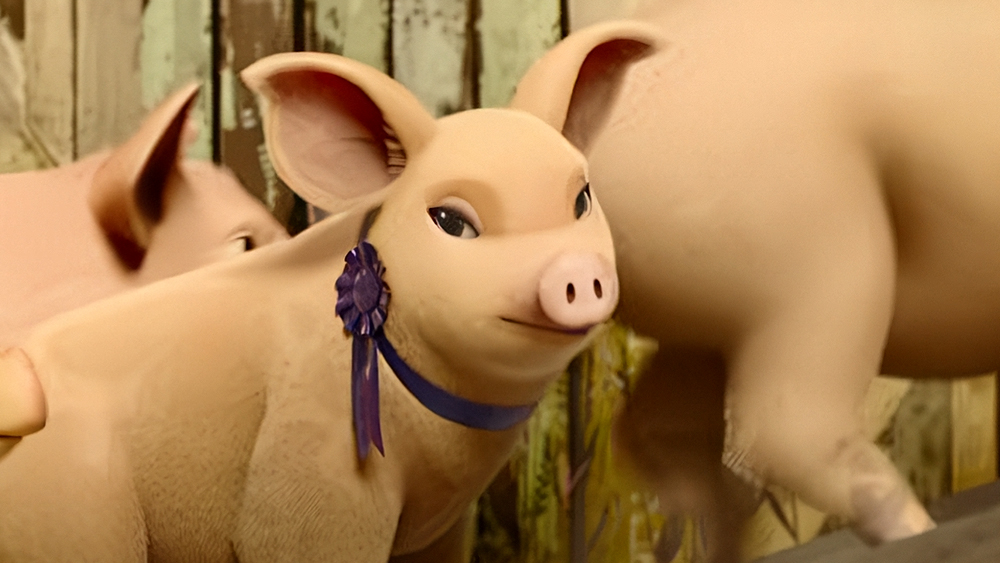The best frame TVs: fantastic TVs that show off your favourite art
Display your favourite works of art when you're not watching TV, on the best frame TVs around.
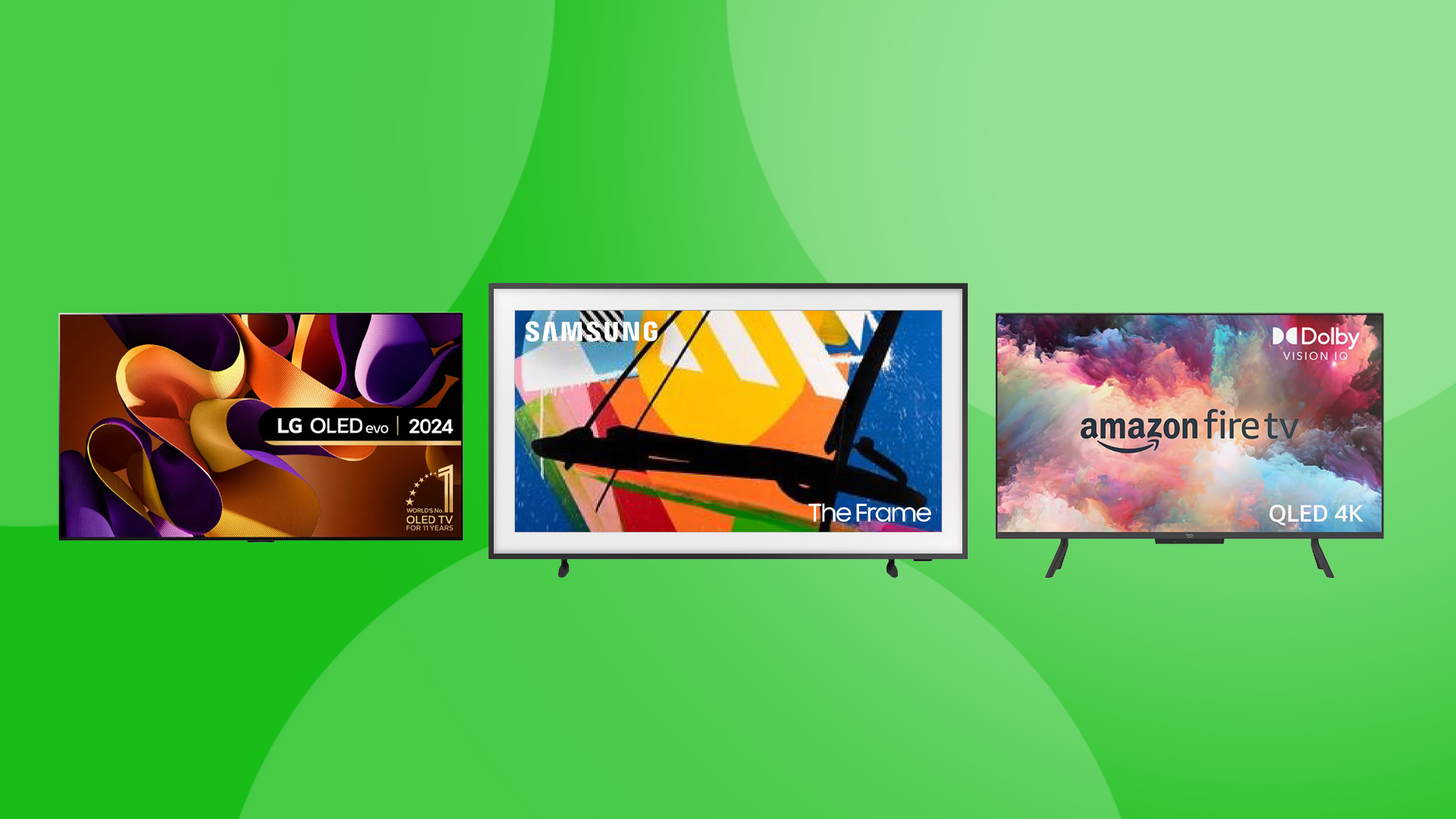
Your TV doesn't need to be a boring black rectangle. The best frame TVs can transform your living space into digital art galleries when you're not watching shows, thanks to their sophisticated displays, anti-glare matte screens and elegant bezels.
Recently, this tech has come on leaps and bounds. Today's frame TVs offer sharp resolution, customisable frames and motion sensors that wake the display as you enter the room. Some include curated art collections, whilst others let you upload your own photography, and/or connect to subscription services for rotating exhibitions.
Below you'll find the five best frame TVs available today, starting with our top pick, the Frame TV from Samsung. So whether you prioritise picture quality, design flexibility, or value, you'll find the right frame TV here.
Best frame TV overall
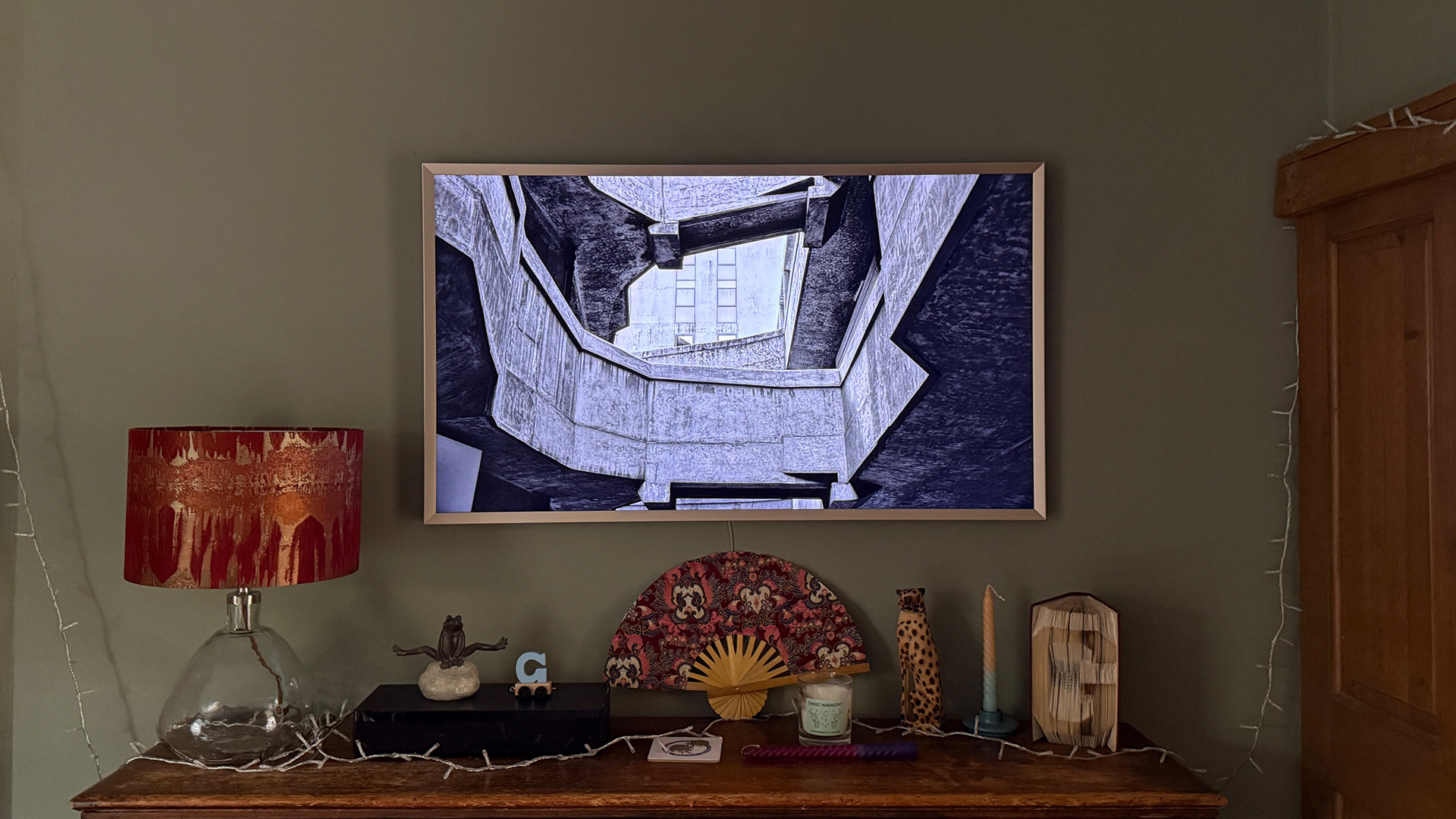
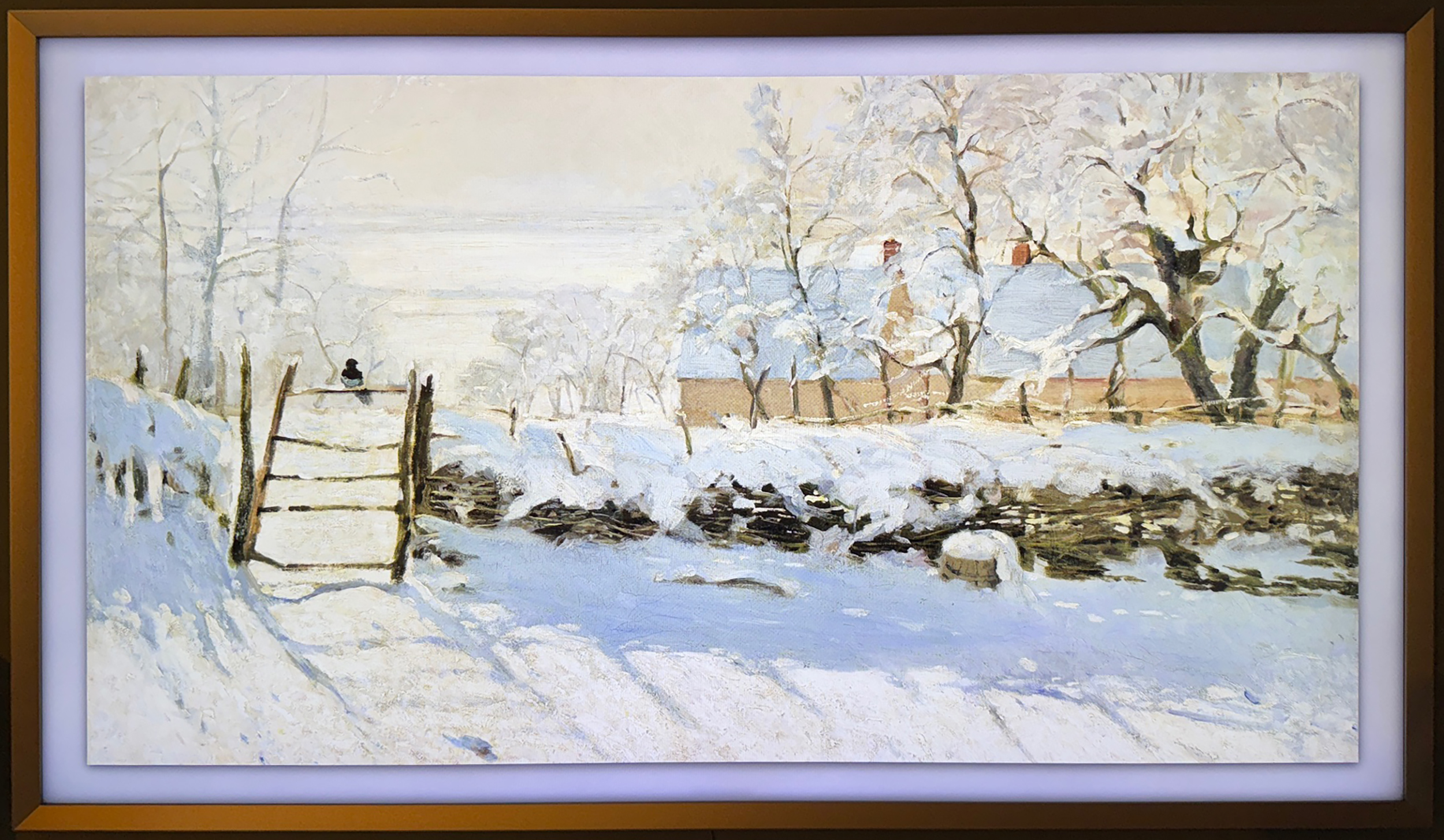
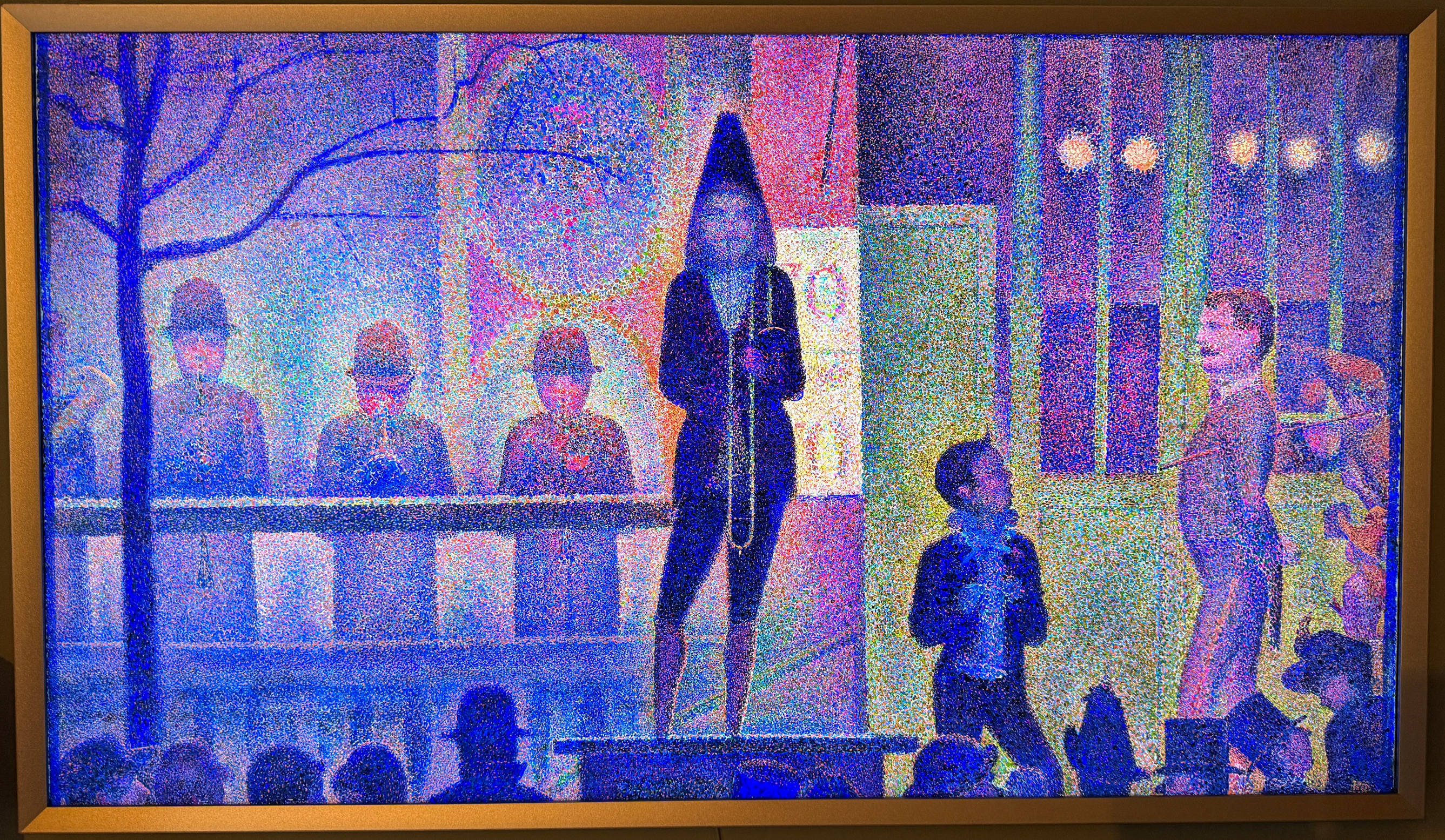
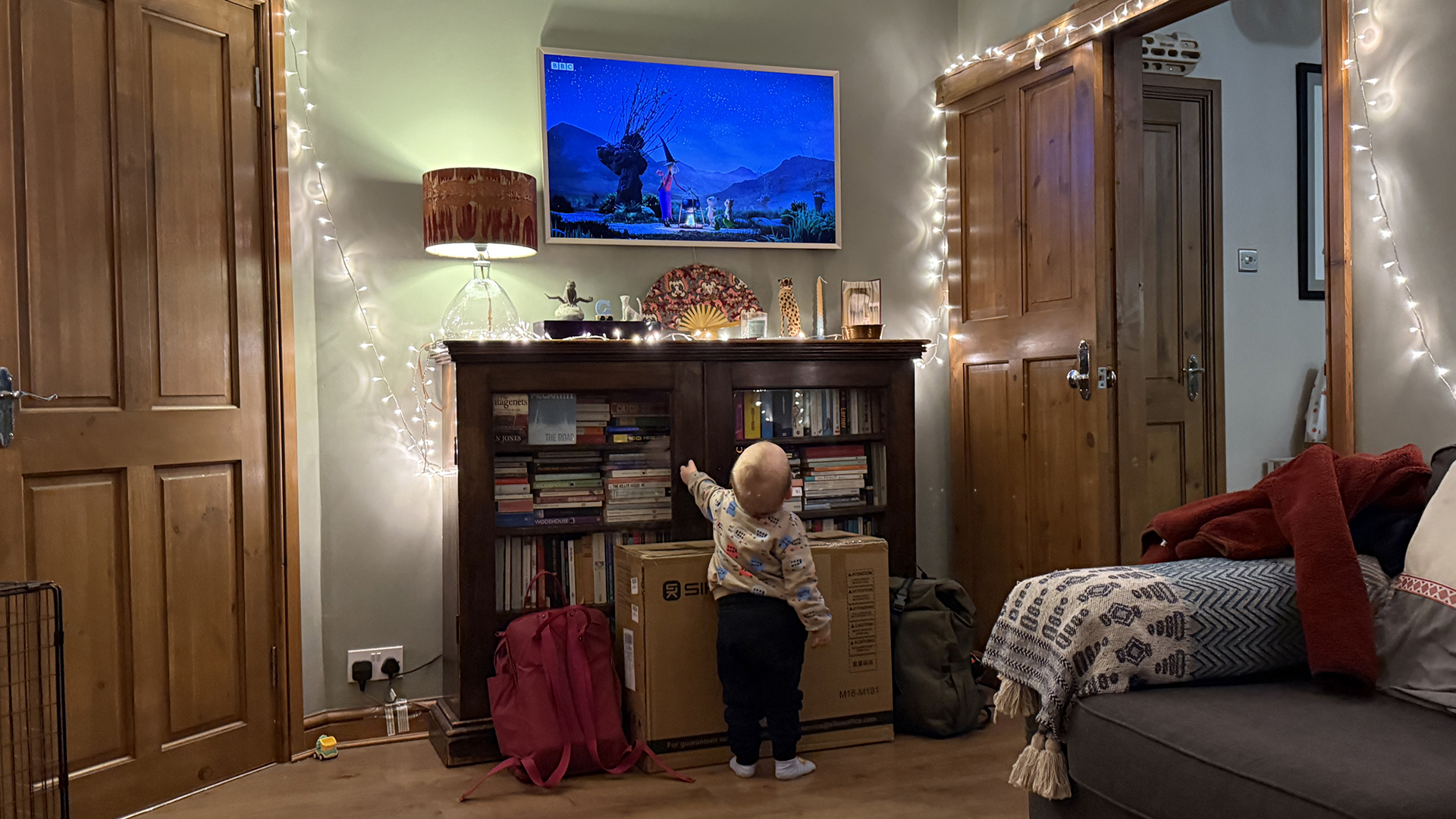
Specifications
Reasons to buy
Reasons to avoid
30-second review: The Samsung Frame TV is my top pick if you're looking for both a high-quality TV and a digital art display. The 2024 version – which I reviewed – features improved bezel designs, Quantum HDR, and Pantone-certified colours, and a lovely matte display finish, making it an excellent choice for art lovers. You can either subscribe to the Samsung Art Store to access a vast collection of art or upload your own images via USB. The TV also features built-in voice assistants like Google Assistant and Amazon Alexa. The sizes range from 32 to 85 inches, so you can choose what fits your space best.
Price: The Samsung Frame TV is available at various price points depending on the size. For example, a 50-inch model retails around $959 / £869, though promotions and discounts are common, so it's worth shopping around. Note though that if you're going for the full experience, including custom bezels, art subscriptions, and professional installation, the costs can add up quickly. And then there's the matter of installation. Yes, the Samsung Frame does come with a wall mount which places your frame TV beautifully flush to the wall. But you'll need to drill holes in your wall to install it… or pay someone to do so.
Design: The design of the Samsung Frame TV is one of its strongest selling points. When I wall-mounted mine, its super-thin bezels closely resembled a real picture frame, making it almost indistinguishable from wall-mounted art. You can further customise the look with additional frames that come in various colours and styles, though these are sold separately. One of the biggest perks of its design is the single cable connection. All other ports, such as HDMI and USB, are housed in a separate box, which you can hide up to 16 feet away, minimising clutter and keeping the focus on the display.
Display: The display is another highlight of this TV, featuring 4K resolution (3,840 x 2,160 pixels) and a QLED panel, which ensures vibrant colours and deep contrasts. Its matte, anti-glare finish is particularly useful if you're displaying art in a brightly lit room. Samsung's Quantum HDR technology enhances the brightness and contrast, making it ideal for both watching TV and displaying art. The 100Hz refresh rate ensures smooth viewing for fast-paced content like sports or action movies.
Performance: The Samsung Frame TV doesn't just look good, it performs well, too. While it's not top-tier in terms of sound (you might want to pair it with a soundbar), the picture quality is sharp and vibrant. Quantum HDR and the wide colour range make sure the images look stunning, whether you're streaming a show or displaying your favourite painting. The refresh rate also ensures smoother motion, especially if you're watching high-def content. However, those looking for Dolby Vision will be disappointed as this feature isn't supported.
Read more: Samsung Frame (2024) review
Best frame TV for budget buyers
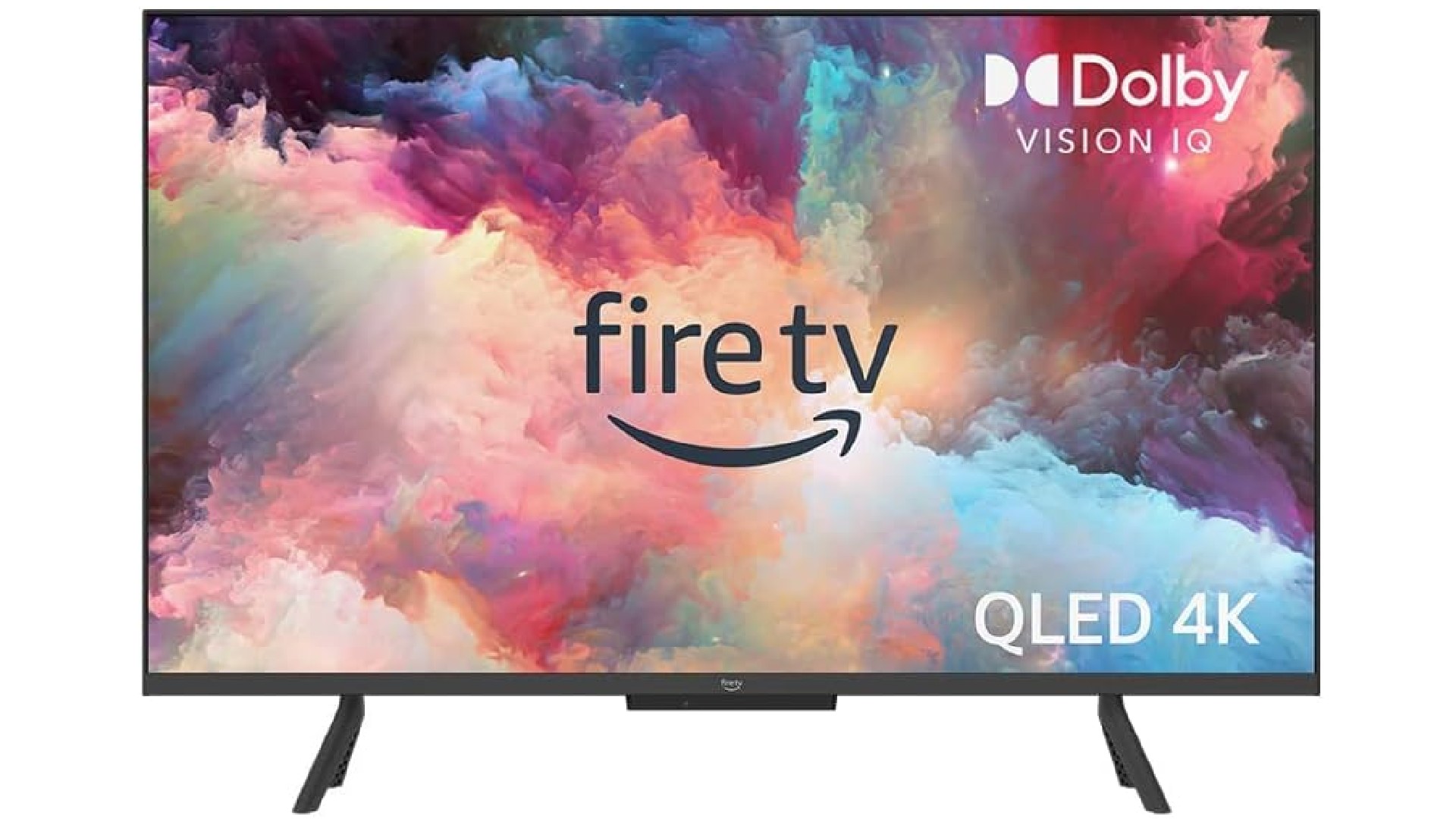

02. Amazon Fire TV Omni QLED
Specifications
Reasons to buy
Reasons to avoid
30-second review: The Amazon Fire TV Omni QLED is an affordable model that boasts many features typically found in higher-end rivals. Available in 65 and 75 inches, it offers a 4K resolution (3,840 x 2,160) and a QLED panel, which helps enhance colour and brightness. Launched in 2023, it's perfect for consumers who want a budget-friendly frame TV without compromising too much. You’ll have access to over 1,500 pieces of art for free, and you can customise the display when the TV is not in use. I liked it so much, I bought myself one.
Price: The Amazon Fire TV Omni QLED is priced competitively, with the 65-inch model retailing around $599/£999. It frequently goes on sale, offering great value for a feature-packed television. This TV stands out in the budget category, offering impressive performance without breaking the bank.
Design: While the Amazon Fire TV Omni QLED may not boast the sleek sophistication of higher-end models, it still presents an attractive appearance with a silver frame and minimal bezels around the screen. The build quality feels solid, though the design is slightly bulkier than its competitors, which may detract from the overall aesthetic for some. The TV comes with a stand, but it lacks a wall mount, so those looking to hang it will need to buy one separately. Also note that the TV’s feet are relatively deep and far apart.
Display: The Omni QLED features a QLED display that offers vibrant colours and decent contrast for its price point. Although it may not rival the picture quality of premium OLED TVs, it provides a surprisingly detailed image with certain types of content. The TV suffers from some backlight blooming and mediocre black levels, but for casual viewing, it performs adequately. HDR support is decent, offering Dolby Vision and HDR10+ features.
Performance: When it comes to performance, the Amazon Fire TV Omni QLED offers solid capabilities for a budget TV. The picture quality is surprisingly good, especially considering its price, with vivid colours and a natural look. However, black levels can be inconsistent, and the sound quality is average at best. With two built-in 12W speakers, the audio is fine for casual viewing, but a soundbar is advisable for a more immersive experience. Additionally, the TV supports gaming features such as VRR and ALLM, making it a viable option for gamers despite lacking 120Hz support.
Best frame TV for picture quality
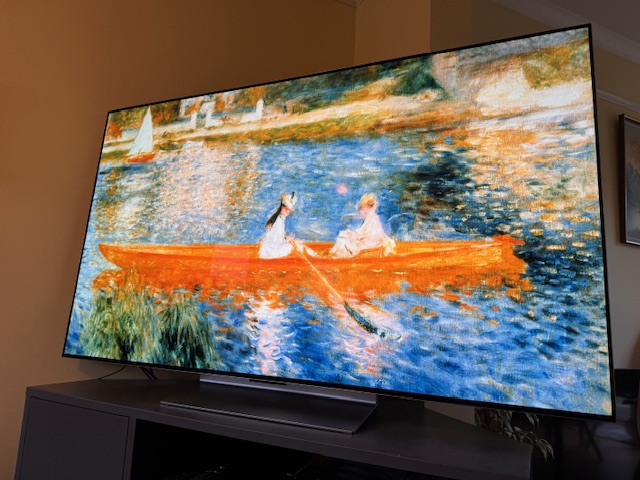
Specifications
Reasons to buy
Reasons to avoid
30-second review: The LG G3 OLED is designed for those who want the best of both worlds: top-tier TV performance and the aesthetic appeal of a frame TV. Available in sizes ranging from 55 to 83 inches, this premium 4K OLED TV excels in brightness, contrast, and colour accuracy. It comes equipped with LG’s latest technologies, including an AI-powered 4K processor that optimises picture and sound quality automatically. Although pricey, its OLED display, auto-adjusting features and Dolby Vision support make it a great investment, particularly for gamers and movie buffs.
Price: The LG G3 OLED is on the expensive side, with the 55-inch model starting around $1,999/£2,399 and the 83-inch version going up to $4,999/£5,999. However, discounts are available, and you can sometimes find the 55-inch model for as low as $1,699/£1,699 during sales events. While it's pricier than the Samsung Frame, you're paying for better image quality.
Design: The LG G3 OLED features a super-thin, sleek design that’s made to be wall-mounted, giving it the appearance of a real picture frame. At just 27mm thick, it mounts flush to the wall for a minimalist look, making it ideal for those looking to incorporate a TV into their decor without it becoming an eyesore. The bezels are almost invisible, creating an edge-to-edge display that highlights the TV’s beautiful OLED screen. Its gallery-like appearance is complemented by built-in artwork that rotates when the TV is not in use. Unfortunately, unlike the Samsung Frame, the LG G3 doesn’t offer customizable bezels or the option to add your own art, which might limit its appeal to those who prefer more personalised displays.
Display: The star here is the impressive display. Utilising LG's OLED Evo technology, it offers better brightness, richer blacks, and more vibrant colours than typical QLED panels. OLED is known for its ability to turn off individual pixels, resulting in perfect blacks and incredible contrast. This makes the G3 an excellent choice for watching movies, gaming, or enjoying HDR content. With a 4K resolution (3,840 x 2,160) and 120Hz refresh rate, the G3 is also a fantastic option for gamers, offering smooth visuals and low input lag. Dolby Vision and HDR10+ are supported, enhancing the dynamic range and colour depth of the content you watch. However, its lack of a matte screen means it’s more prone to glare in brightly lit rooms compared to the Samsung Frame.
Performance: The performance of the LG G3 OLED is top-tier, particularly in terms of picture quality. Powered by the α9 AI 4K Gen6 processor, the TV automatically adjusts the brightness, contrast, and colour depending on the environment and the content being displayed. This AI-driven optimization means you don’t need to constantly tweak settings for different types of media. The TV also supports G-Sync and FreeSync, making it a solid choice for gamers, although its 12.8ms response time isn’t as low as some gaming-specific models. The built-in 60W speakers offer decent sound, but if you're looking for a fully immersive audio experience, a soundbar or external speakers are recommended, especially since the TV supports Dolby Atmos.
Read more: LG G3 OLED TV review.
Best frame TV for design
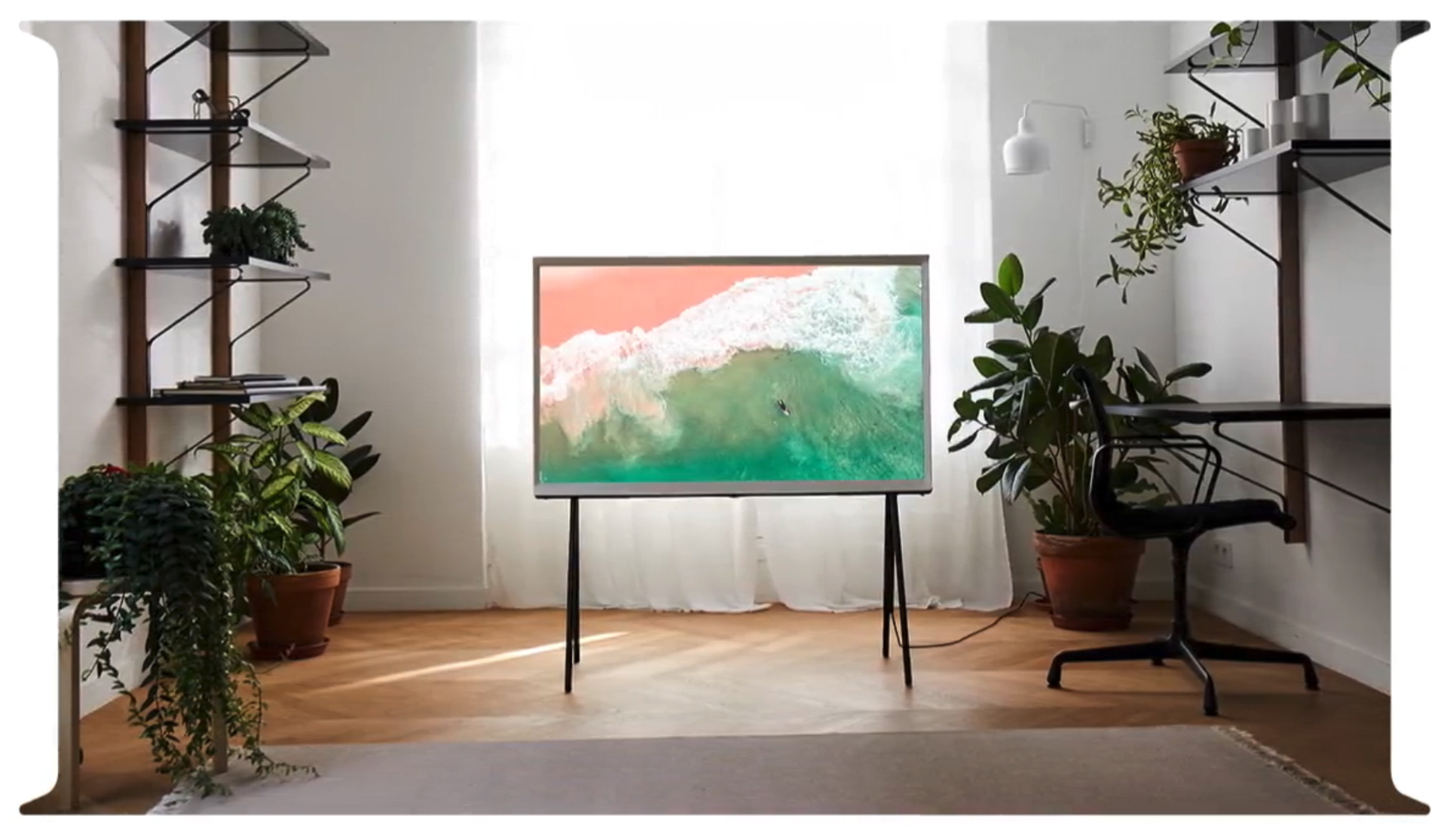
04. Samsung Serif TV
Our expert review:
Specifications
Reasons to buy
Reasons to avoid
30-second review: The Samsung Serif TV blends modern design with solid tech. With its serif-inspired frame, this TV is as much a statement piece as it is a display for your favorite content. Available in sizes ranging from 43 to 55 inches, the Serif uses QLED technology, providing a vibrant 4K image with deep contrast and vivid colours. Its detachable stand offers flexibility in positioning, whether you prefer to place it on a stand or a table. While it lacks a dedicated art mode, the design and overall aesthetic make it a natural fit for any modern space.
Price: The Samsung Serif TV is priced at a premium compared to other frame TVs, primarily due to its unique design and brand reputation. In the US, it generally ranges from $744 to $1,999, depending on the size (from 43-inch to 65-inch) and specific retailer. In the UK, prices typically fall between £499 and £1,099, also varying by screen size and where you purchase it. While this may seem steep, its combination of aesthetics and performance appeals to those willing to invest in a TV that serves as a statement piece in their home.
Design: Created in collaboration with renowned French designers Ronan and Erwan Bouroullec, the Serif's design stands out with its unique "I" shape when viewed from the side, reminiscent of a serif typeface. This means it functions as a piece of furniture as well as a conventional TV, seamlessly integrating into your living environment. It comes in stylish colours like Cloud White and Cotton Blue, which further enhance its aesthetic appeal, and its top bezel is broad enough to serve as a small shelf, allowing you to place decorative items, photo frames, or plants on top. Its four sturdy metal legs mimic the look of an artist's easel, further enhancing the artistic look, and the rear panel hides cables and connections, maintaining a clean and stylish appearance.
Display: A 4K QLED display ensures sharp, detailed images with vibrant colours and impressive contrast. The matte finish helps reduce reflections, making it suitable for bright rooms. Expect rich, dynamic colours and better brightness levels compared to standard LED TVs. The screen supports HDR content, allowing for a wider range of colours and enhanced detail in dark scenes, although it may not match the black levels of premium OLEDs.
Performance: The Samsung Serif TV delivers solid picture quality, enhanced by QLED technology. The colour accuracy and brightness make it suitable for various types of content, from vivid animated films to dark dramas. While it may not feature advanced gaming specifications or a high refresh rate, the Serif excels in delivering a visually pleasing experience for most viewers. The sound system features Dolby Digital Plus and Adaptive Sound+, providing decent audio quality that complements the visual experience. However, audiophiles may find it lacking in depth and richness, and it might be advisable to invest in a dedicated soundbar.
Best frame TV for gaming
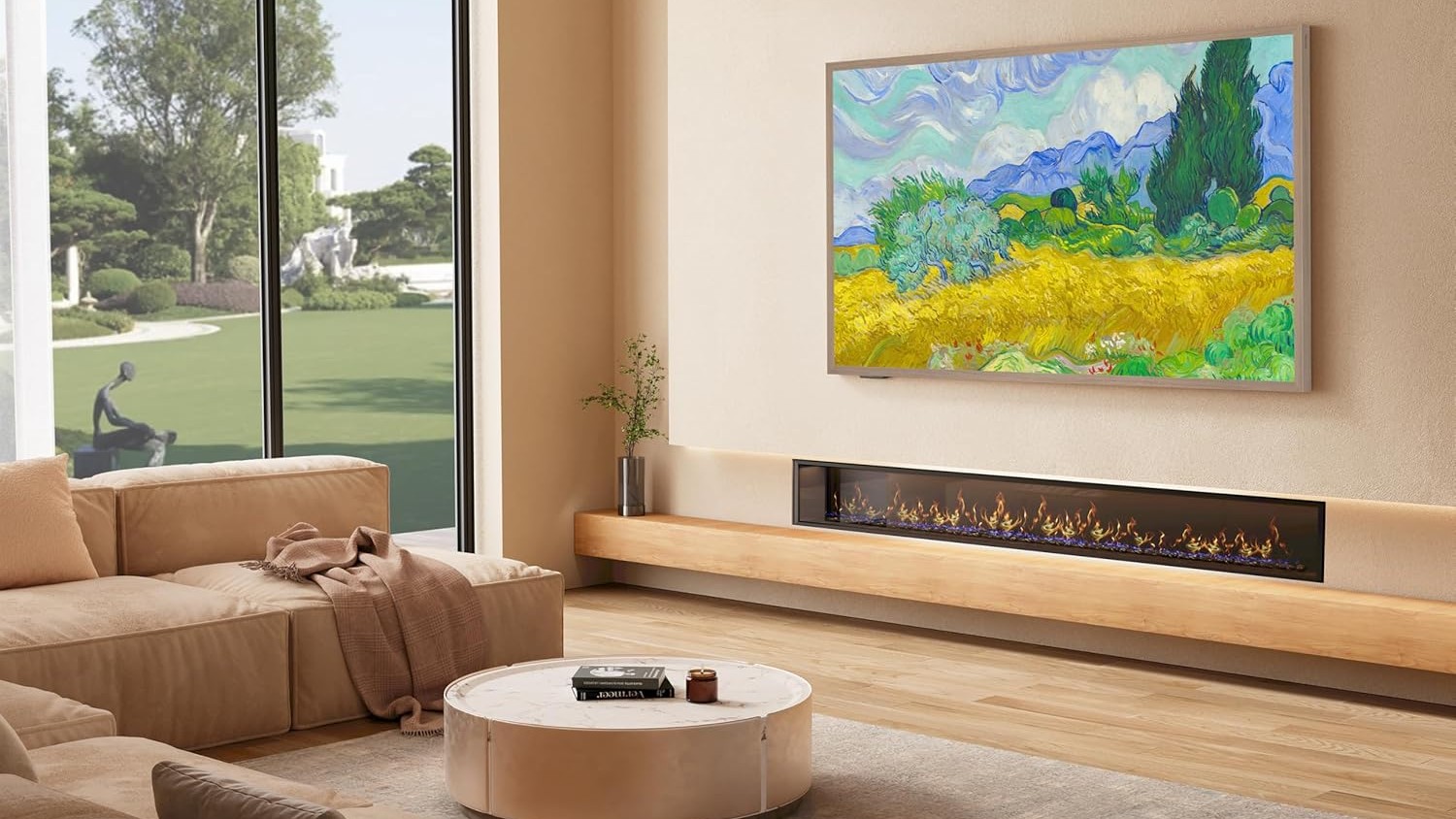
05. Hisense S7N Canvas TV 55-inch
Specifications
Reasons to buy
Reasons to avoid
30-second review: If gaming matters to you as much as aesthetics, here's our top choice. While it delivers the art TV essentials (matte display, magnetic wooden frame, and access to 300+ free artworks), what it really excels at is gaming credentials, thanks to its native 144Hz refresh rate, VRR support up to 144Hz, and AMD FreeSync Premium. Available in 55 and 65 inches, it undercuts Samsung's Frame on price whilst offering superior gaming specs. However, picture quality for films and TV shows is merely adequate, with unimpressive black levels and modest brightness.
Price: At $999/£999 for the 55-inch, the Hisense Canvas TV is more expensive than the Samsung Frame right now. However, you save some money on the included wooden bezel and free artwork library, as Samsung's Frame requires paid add-ons.
Design: The anti-glare matte display works nicely for displaying art between gaming sessions. Both desktop feet and an ultra-slim wall mount are provided for flexible placement. The main design compromise is port access: unlike the Frame's clever One Connect Box, you'll need to reach behind the Canvas to swap cables, which can be fiddly if you decide to go with the wall-mounted option.
Display: The Canvas uses QLED technology with 4K resolution and an impressive 144Hz refresh rate: higher than most frame TVs. HDR10, HDR10+ and Dolby Vision are supported. The Google TV platform is simple to navigate, and the included backlit remote is a nice touch. Gaming visuals benefit from the high refresh rate and vibrant QLED colours, though it has to be said, the display struggles with deep blacks and contrast. Also note that peak HDR brightness only reaches around 420 nits, which is adequate for bright gaming environments but won't impress cinephiles.
Performance: This is where the Canvas truly shines for gamers. The Google TV platform provides easy access to cloud gaming services. The 144Hz Game Mode Pro delivers Variable Refresh Rate from 48Hz to 144Hz, AMD FreeSync Premium support, and ALLM for automatic switching. Input lag measures just 16ms in Game Mode, making it responsive enough for competitive play. And colour accuracy is decent with a Delta-E of 2.1, and bright, action-packed games look excellent. However, it's not all good news: moody cinematic games with dark environments expose the set's contrast limitations and while sound quality is functional, it benefits from a gaming headset or soundbar.
How to choose the best frame TV
Frame TVs are a great choice for people who want a TV that can blend in with their home décor and display art. To find the right one for your needs, there are a few factors to consider.
First, size. Most frame TVs come in a variety of sizes, so it's important to choose one that's the right dimensions for your space. Bigger doesn't always mean better, so consider the distance between where you'll be sitting and the TV when making your decision.
Second, think about resolution. All three frame TVs on our list come with 4K resolution which will display sharp and detailed images. Other, cheaper TVs may have lower resolution, so take care.
Thirdly, consider aesthetics. Frame TVs come in a variety of colours and styles, so try to choose a frame TV that matches your home décor. You can might also consider buying interchangeable bezels if you need to change the look of your frame TV. Finally, think about mounting options. Frame TVs can either be wall-mounted or placed on a TV stand, so choose a frame TV that comes with the mounting options you need to make it work in your space.
FAQs
What is a frame TV?
A frame TV is a TV designed to mimic wall-mounted artwork when not in use. These sets feature ultra-thin bezels, matte anti-glare screens and specialised art modes that display digital paintings or photographs. They have a matte finish to reduce reflections and create a canvas-like appearance that helps the TV blend seamlessly into your décor. When you want to watch content, they function as a standard 4K smart TV.
Is the Frame TV an actual TV?
Yes, frame TVs are fully functional televisions capable of streaming shows, playing games and displaying all your usual content. The "frame" designation refers purely to their aesthetic design: the thin profile, minimal bezels, and flush wall-mounting capability. When powered on for viewing, they perform like any other smart TV. The primary trade-off is viewing angles: most frame TVs work best when you're seated directly in front of them, whereas some traditional TVs offer wider viewing angles.
What are the disadvantages of a Frame TV?
Frame TVs typically cost more than standard TVs with similar specs. Bear in mind too that you may need to purchase additional stuff, such as custom bezels (which can cost £100-300), art subscriptions for premium content, and professional installation.
Another potential disadvantage of frame TVs can be modest brightness levels and limited contrast compared to similarly priced Mini-LED or OLED sets. Also, the matte screen coating that makes artwork look realistic can slightly reduce picture vibrancy during normal viewing, and the narrow viewing angles mean everyone needs to sit relatively centered to the screen.
Can I display my own photos on a frame TV?
Absolutely. All frame TVs on our list allow you to upload and display personal photographs. Most of them support USB drives for photo transfer, whilst some also work with smartphone apps or cloud services for wireless uploads. What many people like to do is create custom galleries that rotate through your images on a timer, just like a digital photo frame. The high resolution and matte screens do an excellent job showcasing personal photography alongside (or instead of) professional artworks.
Do frame TVs use a lot of electricity?
Because Frame TVs are always on, you may worry about energy costs. But actually, these TVs are generally very energy-efficient when displaying artwork. Most use motion sensors to detect when someone enters the room, powering on the display automatically and turning it off when the room is empty. In art mode, power consumption typically ranges from 30-60 watts, depending on screen size and brightness settings, which is around the same as a couple of light bulbs. At a rough guesstimate, running one all year round will probably add around $10-30 to your annual energy bill.
Daily design news, reviews, how-tos and more, as picked by the editors.

Beren cut his teeth as Staff Writer on the digital art magazine ImagineFX 13 years ago, and has since worked on and edited several creative titles. As Ecom Editor on Creative Bloq, when he's not reviewing the latest audiophile headphones or evaluating the best designed ergonomic office chairs, he’s testing laptops, TVs and monitors, all so he can find the best deals on the best tech for Creative Bloq’s creative professional audience.
- Tom MayFreelance journalist and editor
